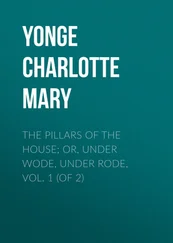Trenches dug at the time of Munich were inspected and, if suitably sited, were redug if necessary to four feet deep, lined with concrete or steel and their entrances closed. But they had no sanitary arrangements, or even duckboard flooring, making them unsuitable for night-long occupation – though this often happened – were cold, and apt to become waterlogged. In any case, once the Munich crisis had passed, many local authorities had filled in their trenches and were reluctant to start digging again.
On 15 March 1939 German troops occupied Prague, in direct contravention of the Munich Agreement. Civil defence measures in Britain were immediately escalated. A new Civil Defence Bill conferred wide-ranging peacetime powers on local authorities that included the right to designate buildings as public shelters – shops, for example: Dickins & Jones in Regent Street had a much-sought-after basement shelter, as did D.H. Evans in Oxford Street – or clubs or institutes, against the wish of the owner if necessary, and to do whatever structural work was required, paying compensation if appropriate. Those people with incomes that entitled them to a government-issue Anderson shelter were supplied free of charge with materials to strengthen their ‘refuge room’ if they had no space for an external shelter, and the local authority would be reimbursed for the cost of doing the work. New buildings had to incorporate spaces for shelters, and employers with a workforce of fifty or more in a designated target area were obliged to provide shelter accommodation (and to organise ARP services) for their employees; they would receive government funding to help pay for this. Smaller firms in the same areas could apply for funding to safeguard their workforces.
Anderson shelters and reinforced basements were not going to provide protection for all those in vulnerable areas, so in May 1939 money was made available for materials for local authorities to build public outdoor shelters (though they had to foot the bill for the construction costs). For blocks of flats where there was no suitable shelter accommodation for all the residents, and where most were not eligible for free shelters, the landlord could be compelled to build one if petitioned to do so by more than 50 per cent of the tenants, and could recoup the cost by raising all the rents.
Despite these initiatives, by September 1939 shelter provision was lamentably behind schedule. There was a shortfall of about a million of the promised Anderson shelters (those delivered were optimistically pronounced to provide protection for 60,000 people), meaning that even in what were believed to be the most dangerous areas many people had no shelters, and none were offered for sale until the following month. These cost between £6.14s and £10.18s – easy terms available. However, the take-up was limited – by April 1940 fewer than a thousand had been bought, while the basement-strengthening programme had hardly started.
In some places the provision of public shelters was more advanced: about three-quarters of the trenches dug at the time of Munich had been reinforced, the City of London reported that its public-shelter-building programme was complete, and on the eve of war most cities exercised their power to requisition suitable sites. Notices proclaiming ‘Public Shelter’ appeared on various buildings – some more suitable than others. At the end of August 1939, in tardy recognition of this unsatisfactory provision, the government urged local authorities to provide purpose-built public shelters, above-ground ‘heavily protected’ brick and concrete constructions capable of holding up to fifty people.
Fortunately, the eight-month respite of the ‘phoney war’, which effectively lasted until May 1940, meant that shelter provision could continue in wartime. However, the materials needed for shelters were now urgently required for military purposes. Smaller Anderson shelters, only four feet five inches long, were now produced and pronounced suitable for four persons, while the original ‘standard’ Anderson was redesignated as large enough for six people, with an ‘extension’ tacked on to allow it to accommodate up to ten if necessary. Finally, in April 1940, the production of Anderson shelters was suspended altogether, but by the start of the blitz nearly two and a half million had been distributed, theoretically providing shelter for 12.5 million people. Many gardens, however, were littered with unerected Anderson shelters, now rusting and near to useless. Some enterprising boroughs such as Hackney in east London, under its redoubtable ARP Controller Dr Richard Tee, organised teams of council workmen or volunteers to help householders, and the Bristol Civil Defence Area had taken a similar initiative, but the government decided that sterner measures were needed to compel self-help. From May 1940, under the terms of Defence Regulation 23B, everyone who had been issued with an Anderson shelter had ten days in which to erect it and cover it in the requisite manner, or to report to their local authority that they had not done so. If they did not, and could not show that they were genuinely incapable of doing so, the steel sheets would be collected and issued to another household.
Meanwhile the government was pressing forward with the provision of public communal shelters, intended to accommodate twelve or so families from nearby properties, which it fully funded. After the Russian bombing of Finland in the winter of 1939–40 it was decided that railway stations would be likely targets, so shelters capable of sheltering the equivalent of ten minutes’ flow of passengers at peak travel times needed be provided at them. These were started at all London termini, but were far from completion when the blitz started.
By the start of the blitz, of the 27.5 million people living in ‘specified areas’ (that is, those urban and industrial centres considered particularly likely to be attacked, from which evacuation had been recommended), 17.5 million had been provided with some sort of shelter, domestic or public, at government expense. A few householders had provided themselves with shelters at their own expense, and an additional five million could use shelters at work. These figures were produced by the government when it came under attack – as it had since the mid-1930s – for the slow, patchy and often inadequate shelter provision. There was still an obvious shortfall, and those people not in a ‘specified area’ were left to their own devices, though issued with a booklet, Your Home as an Air Raid Shelter. Moreover, the shelter experience of many was very far from satisfactory.
People with rooms in their homes that they could make as bomb-proof as any domestic arrangement could be were, generally speaking, the most fortunate. BBC producer Anthony Weymouth and his family used the hall of their ground-floor flat in a mansion block in Harley Street in central London: the hall was the most sheltered part of their home, as it had rooms on either side, and its only window, which looked into an inner courtyard, had been fitted with an asbestos shutter. Citizens without such shutters were advised to leave their windows open, to reduce the risk of injury from shattered glass. The Weymouth family spent night after night in their hall, ‘lying in the dark on our mattresses for … hours listening to the drone of German bombers’. When he worked late at the BBC, Weymouth was obliged to sleep on one of the six hundred mattresses provided at Broadcasting House, ‘for the AA barrage besprinkles the street with pieces of shrapnel’.
Patrick Shea, a Northern Irish civil servant who had been put in charge of producing a top secret ‘War Book’, a manual for senior staff telling them of ‘the role and responsibilities assigned to each and every one of them in a great variety of preconceived situations’, was living in lodgings in Belfast. The household had a clearly defined ‘blitz drill’.
Читать дальше












